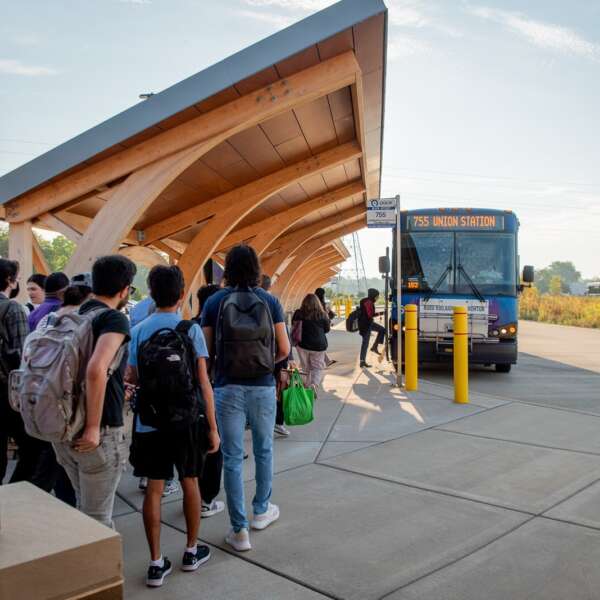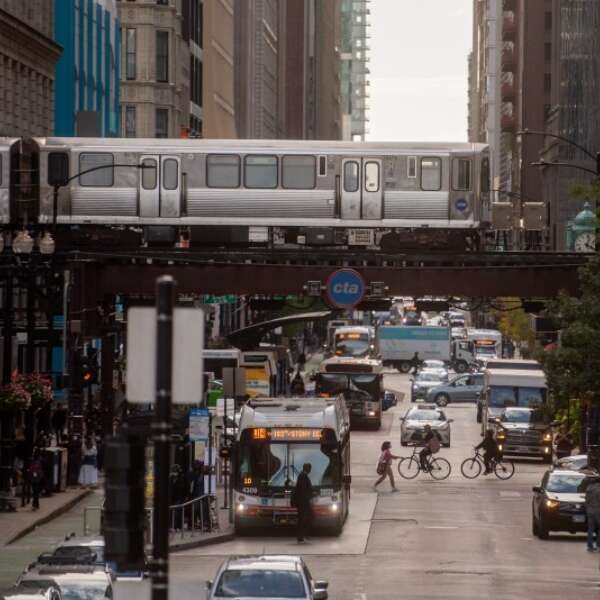RTA proposes reforms to prioritize capital projects, maximizing impact of funding
February 5, 2025
February 5, 2025

RTA is proposing a historic restructuring of the region’s transit governance to maximize the impact of new operating funding and ensure all riders experience an improved, reliable, efficient, integrated transit network. This is the third in a series of blogs exploring the RTA’s proposed governance reforms. These reforms include empowering the RTA to prioritize capital projects, maximizing the impact of state and federal funding.
On January 15, RTA released Transforming Transit, the agency’s vision for a world-class regional transit system with $1.5 billion in annual operating funding supported by a stronger RTA. While the impending regional operating budget gap is $770 million starting in 2026, independent agencies, including the Chicago Metropolitan Agency for Planning (the region’s designated planning agency for transportation) and advocates agree that $1.5 billion annually is needed from state and local sources to achieve the system riders deserve. With this additional sustainable funding, RTA is proposing centralizing fare policy, service standard setting, and capital project prioritization processes to improve regional rider experience while efficiently delivering on shared priorities.
One of the tenets of a stronger RTA is for the agency to lead the capital project prioritization process for all transit projects in the region. Currently, CTA, Metra, and Pace each select and program infrastructure projects independently based on funding levels set by the RTA. The RTA evaluates the combined portfolio of projects as part of the budget process and votes annually on the 5-year capital program, but in accordance with the RTA Act, the RTA’s evaluations do not affect the distribution of funds. While the RTA can analyze projects and make recommendations to the Service Boards, the only mechanism to enforce change per the RTA Act is for the RTA Board to reject the entire capital program at the end of the year or vote down quarterly amendments. The regional vision and the project’s impact on key economic, climate, accessibility, and equity goals are inserted late in the process.
An empowered RTA as envisioned in Transforming Transit could develop the capital program throughout the year and take a regional approach to project selection, leading into the final capital program being brought to the RTA Board for adoption at the end of the year. The RTA would develop a transparent prioritization process for upfront evaluation of all regionally significant capital projects proposed within the region. The RTA would establish an associated process for public input and commit to publishing project scores on the RTA website.
CTA, Metra and Pace would report quarterly to the RTA Board on delivery of their capital programs, and the Board would vote to certify that the project delivery efforts are in substantial compliance or could vote to withhold future funding based on project delivery issues. The Board would consider challenges that affect delivery such as design issues, permitting problems, or funding delays with the goal of ensuring that the selected projects are being delivered to the region in the most efficient way possible.
Increasingly, competitive federal or state discretionary grant funding opportunities favor a regional vision and coordination. RTA’s regional transit strategic plan Transit is the Answer also set a goal for advancing transit friendly streets and bus rapid transit (BRT). We need a strong regional voice to ensure we’re partnering with cities, counties, the state, and roadway agencies to prioritize moving people—not just cars—in roadway projects.
A strong regional agency setting the vision and taking the lead on key federal and state grant applications will ensure that benefits are maximized—be that climate action through greenhouse gas reductions, investment dollars coming to the region, or being good stewards of our existing infrastructure. To fully leverage a transformational investment in transit service, a strengthened RTA would evaluate all major capital projects and distribute funding based on level of need and scoring of key metrics. This would enable a transparent regional approach to selecting and advancing priorities. These key metrics—like impact on accessibility, state of good repair, equity, and climate—would determine project selection and inclusion in the five-year capital program. A strengthened RTA would lead the early phases of planning, such as alternative analysis for projects that cross operators and geographic boundaries, which are often the most significant to the whole region and currently lack the coordination and advocacy required to win scarce federal grant dollars.
Proposed responsibilities include:
While Transforming Transit envisions service improvements with sustainable investment, Illinois policy makers must reach a transit funding solution by spring 2025 to avoid service cuts of up to 40%. The RTA is working with policy makers at all levels of government to develop sustainable funding solutions and improve the system for all riders. Join the Transit is the Answer Coalition to help bring about the legislative changes needed to support transit at this pivotal moment.
This is the third in a series of blogs exploring the RTA’s proposed governance reforms. Subscribe to the Regional Transit Update newsletter to learn more.
Subscribe to our Newsletter
Related Articles
 RTA proposes reforms to prioritize capital projects, maximizing impact of funding
RTA proposes reforms to prioritize capital projects, maximizing impact of funding
RTA is proposing a historic restructuring of the region’s transit governance to maximize the impact of new operating funding and ensure all riders experience...
February 5, 2025 RTA proposes reforms to integrate fares, require accountability for faster and more reliable transit
RTA proposes reforms to integrate fares, require accountability for faster and more reliable transit
RTA is proposing a historic restructuring of the region’s transit governance to maximize the impact of any new operating funding and ensure all riders experi...
February 5, 2025 For the third year in a row, regional transit ridership was up by double-digits in 2024
For the third year in a row, regional transit ridership was up by double-digits in 2024
Ridership across the Chicago region’s transit system continued to increase throughout 2024, according to the latest data from CTA, Metra, and Pace. The regio...
January 28, 2025 RTA is seeking $1.5 billion in annual operating funding. What would that mean for your commute?
RTA is seeking $1.5 billion in annual operating funding. What would that mean for your commute?
On January 15, RTA released Transforming Transit, a vision for the regional transit system with $1.5 billion in annual operating funding supported by a stron...
January 28, 2025 RTA proposes reforms to increase efficiency, transparency, and accountability across transit system
RTA proposes reforms to increase efficiency, transparency, and accountability across transit system
RTA is proposing a historic restructuring of the region’s transit governance to maximize the impact of new operating funding and ensure all riders experience...
January 24, 2025 What Chicago can learn from Philadelphia as the transit fiscal cliff approaches
What Chicago can learn from Philadelphia as the transit fiscal cliff approaches
Beginning in 2026, Chicago’s regional transit system faces a projected $770 million annual budget gap. At nearly 20% of the annual operating budget, this gap...
January 23, 2025